Thingiverse
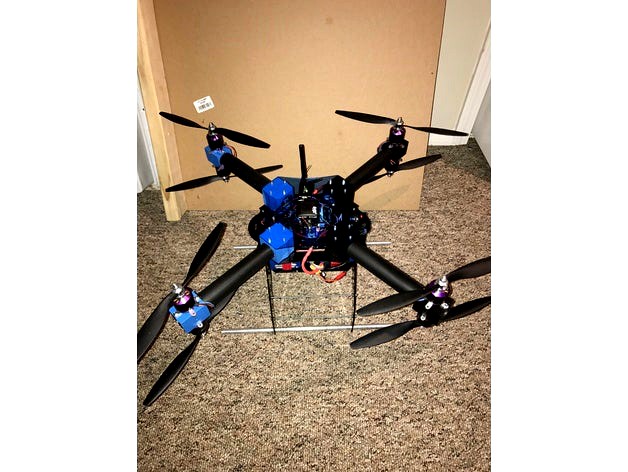
X8 Drone by mlenzi18
by Thingiverse
Last crawled date: 3 years ago
ML8
To complete this project, you will need a CNC machine, 3D printer, drill, and soldering iron. More instructions to come on assembly.
I set out to build a tank of a drone. Something that would not blow away in the wind and could carry a payload equal to its own weight.
Hardware:
1 x Pixhawk 2.1
1 x 3DR GPS
1 x 915 Mhz Telemetry Receiver/Transmitter
2 x Sky III Quattro 4in1 ESC
8 x SunnySky Angel 800 KV 2820 Motor
2 x 8000 mAh 4S Zippy Battery
1 x 1000 mAh 3S Zippy Battery
1 x FPV 3 axis Gimbal (for a GoPro)
1 x X8R FrSky Receiver
1 x X9 Plus Taranis Transmitter
8 x 12x4.5 Props
Legs
8 x 8 in 6-32 threaded rod (for leg support)
32 x 6-32 lock washer
32 x 6-32 hex nut
2 x 18 in 1/2in aluminum pipe
Motor-Arms-Chassis
16 x 60mm M3 machine screw
8 x 50mm M3 machine screw
Chassis-Legs
8 x 16mm M3 machine screw
Gimbal
4 x 25mm M3 machine screw (for mounting 1000 mAh holder, battery plate, gimbal connector, and gimbal)
All of these will need a M3 nylon lock nut.
Pixhawk 2.1 Mouting
4 x 20mm M2.5 machine screw (for mounting the Pixhawk 2.1)
4 x 15mm M2.5 nylon spacer (for mounting the Pixhawk 2.1)
Other Things:
M3 8 mm washers, silicon wire (8 guage, 14 guage), 2 Mauch 200A battery sensors (these are great and have connectors for the Pixhawk 2.1), several zipties, 5.5 mm bullet connectors, 5 velcro straps (20mm wide and 1 foot long). Arms are made from cylinders 35mm pipes I took off a stacking shelf assembly I bought from Hardor Freight. I would assume 35mm carbon fiber pipes arms would be better but for $23, you get 12 arms. They are cut to 10.5".
The 3D printed objects were printed at 100% infill in PLA. This could likely be reduced to save on weight but that is not really an issue.
CNC machined parts were from 12"x12" cast acrylic (~3mm thick) with 1/8" single flute bit. All CNC cuts inside the perimeter are cut using inside the line setting. The perimeter of the piece is meant to be cut outside the line. I cut acrylic with 0.2mm depth per pass and 30 mm/s speed.
If you build one, your first thought will be, no chance this thing can fly. It weighs roughly 5kg or 11 lbs. Outweighing the DJI Phantom by 4 kilograms. But here is the math. Each motor, with a 12x4.5 prop, has 2000 g of thrust. Multiply by 8 and that is 16 kg of thrust. However, the coaxial design is not 100% efficient. The second motor just speeds up already sped up air. It does save on weight of the chassis. So say its 80% efficient and we have a max thrust of 12.5 kg. Ideally we'd like to be able to hover at half throttle and she does. At full throttle she'll soar. Careful on your first flight. If the Phantom is a Miata, then this is an H1 Hummer.
If you need assistance or have questions, don't hesitate to comment.
To complete this project, you will need a CNC machine, 3D printer, drill, and soldering iron. More instructions to come on assembly.
I set out to build a tank of a drone. Something that would not blow away in the wind and could carry a payload equal to its own weight.
Hardware:
1 x Pixhawk 2.1
1 x 3DR GPS
1 x 915 Mhz Telemetry Receiver/Transmitter
2 x Sky III Quattro 4in1 ESC
8 x SunnySky Angel 800 KV 2820 Motor
2 x 8000 mAh 4S Zippy Battery
1 x 1000 mAh 3S Zippy Battery
1 x FPV 3 axis Gimbal (for a GoPro)
1 x X8R FrSky Receiver
1 x X9 Plus Taranis Transmitter
8 x 12x4.5 Props
Legs
8 x 8 in 6-32 threaded rod (for leg support)
32 x 6-32 lock washer
32 x 6-32 hex nut
2 x 18 in 1/2in aluminum pipe
Motor-Arms-Chassis
16 x 60mm M3 machine screw
8 x 50mm M3 machine screw
Chassis-Legs
8 x 16mm M3 machine screw
Gimbal
4 x 25mm M3 machine screw (for mounting 1000 mAh holder, battery plate, gimbal connector, and gimbal)
All of these will need a M3 nylon lock nut.
Pixhawk 2.1 Mouting
4 x 20mm M2.5 machine screw (for mounting the Pixhawk 2.1)
4 x 15mm M2.5 nylon spacer (for mounting the Pixhawk 2.1)
Other Things:
M3 8 mm washers, silicon wire (8 guage, 14 guage), 2 Mauch 200A battery sensors (these are great and have connectors for the Pixhawk 2.1), several zipties, 5.5 mm bullet connectors, 5 velcro straps (20mm wide and 1 foot long). Arms are made from cylinders 35mm pipes I took off a stacking shelf assembly I bought from Hardor Freight. I would assume 35mm carbon fiber pipes arms would be better but for $23, you get 12 arms. They are cut to 10.5".
The 3D printed objects were printed at 100% infill in PLA. This could likely be reduced to save on weight but that is not really an issue.
CNC machined parts were from 12"x12" cast acrylic (~3mm thick) with 1/8" single flute bit. All CNC cuts inside the perimeter are cut using inside the line setting. The perimeter of the piece is meant to be cut outside the line. I cut acrylic with 0.2mm depth per pass and 30 mm/s speed.
If you build one, your first thought will be, no chance this thing can fly. It weighs roughly 5kg or 11 lbs. Outweighing the DJI Phantom by 4 kilograms. But here is the math. Each motor, with a 12x4.5 prop, has 2000 g of thrust. Multiply by 8 and that is 16 kg of thrust. However, the coaxial design is not 100% efficient. The second motor just speeds up already sped up air. It does save on weight of the chassis. So say its 80% efficient and we have a max thrust of 12.5 kg. Ideally we'd like to be able to hover at half throttle and she does. At full throttle she'll soar. Careful on your first flight. If the Phantom is a Miata, then this is an H1 Hummer.
If you need assistance or have questions, don't hesitate to comment.
Similar models
grabcad
free

Bracket for Battery Disconnect Holder
... cables.
i filed two notches in the battery disconnect holder to accommodate the lanyard of the cover for the battery terminals.
3dwarehouse
free

screw, set, machine, 8-32 x 1 in., McMaster-Carr 92311A199
...crew, set, machine, 8-32 x 1 in., mcmaster-carr 92311a199
3dwarehouse
screw, set, machine, 8-32 x 1 in., mcmaster-carr 92311a199
thingiverse
free

Skid steer Loader
...-32 nylon collar lock nuts
6x #10 flatwashers (optional)
1x m3 x 15mm machine screw
1x m3 nut
8x ~45mm o-rings
thingiverse
free

DJI Air Frame by cooasty
...5564
remix:
miguel ceccherini provided .stl files for antenna/compass, leg, & leg bkt.https://grabcad.com/miguel.ceccherini-1
3dwarehouse
free

screw, machine, flat head, 8-32 x 1, McMaster-Carr 91771A199
..., machine, flat head, 8-32 x 1, mcmaster-carr 91771a199
3dwarehouse
screw, machine, flat head, 8-32 x 1, mcmaster-carr 91771a199
3dwarehouse
free

screw, machine, pan head, 8-32 x 1, McMaster-Carr 91772A199
...ew, machine, pan head, 8-32 x 1, mcmaster-carr 91772a199
3dwarehouse
screw, machine, pan head, 8-32 x 1, mcmaster-carr 91772a199
grabcad
free

Metric Screws from M2.5 x 3 to M2.5 x 25
...imensions are : m2.5 x 3 / m2.5 x 4 / m2.5 x 5 / m2.5 x 6 / m2.5 x 8 / m2.5 x 10 / m2.5 x 13 / m2.5 x 16 / m2.5 x 20 / m2.5 x 25
thingiverse
free

ArduRoller Chassis by fasaxc
...arkfun)
i've shared the code and assets at github.com/fasaxc/arduroller.
video is at www.flickr.com/photos/fasaxc/5944650602/
thingiverse
free

Nema 17 Motor Mounting Bracket
...inch 6-32 machines screws and nuts should work as well
also note: you can use shorter (20 mm) length screws for two of the holes.
thingiverse
free

Ender 3 HDD Motor Spool Holder by Amazing3D
...nd screws)
1 x hdd_ender3_backplate
1 x hdd_motor_holder
1 x hdd_spool_holder
6 x 6-32 machine screws
6 x 6-32 machine screw nuts
X8
turbosquid
$6

Door X8
...yalty free 3d model door x8 for download as max, obj, and fbx on turbosquid: 3d models for games, architecture, videos. (1266583)
turbosquid
$16

Winter trees x8
...uid
royalty free 3d model winter trees x8 for download as ma on turbosquid: 3d models for games, architecture, videos. (1655056)
3ddd
free

Iocean X8
...iocean x8
3ddd
смартфон , iocean
мощный китайский смартфон от компании айоушен
3d_export
$25

Iocean X8 China smartphone 3D Model
...x8 hd fhd china sony gaaxy apple ipad iphone samsung xperia lenovo
iocean x8 china smartphone 3d model artur92_art 84533 3dexport
3ddd
$1

Vintage lamp industrial x8
... lamp , metal
vintage lamp industrial, with metal and glass
turbosquid
$35

Chair collection X8!! + Excellent Table
... available on turbo squid, the world's leading provider of digital 3d models for visualization, films, television, and games.
humster3d
$40

3D model of Lava Iris X8 White
... detailed 3d model of lava iris x8 white in various file formats. all our 3d models were created maximally close to the original.
humster3d
$40

3D model of Lava Iris X8 Black
... detailed 3d model of lava iris x8 black in various file formats. all our 3d models were created maximally close to the original.
turbosquid
$5

1/2 Wall x8 Rect Tube
... available on turbo squid, the world's leading provider of digital 3d models for visualization, films, television, and games.
turbosquid
$4

5/16 Wall x8 Rect Tube
... available on turbo squid, the world's leading provider of digital 3d models for visualization, films, television, and games.
Drone
3d_export
$12
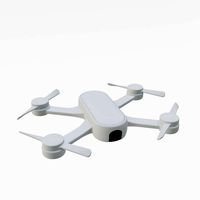
Drones
...drones
3dexport
drones
3d_export
$5

drone
...drone
3dexport
drone
3d_export
$6

drone
...drone
3dexport
high poly model of dji phantom 4 (drone)
3d_export
$5
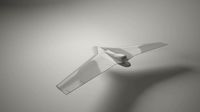
drone
...drone
3dexport
drone military flight, sizes are in mm, modeled in fision 360
3d_export
free
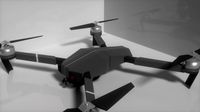
drone
...drone
3dexport
drone de uso tactico, creado en blender version 2.79
3d_export
$35

DRONE
...drone
3dexport
turkey drone alpagu kamikaze foldable wing 3ds max 2019,2020,2021,2022 vray 5.00 rendered
3d_ocean
$29
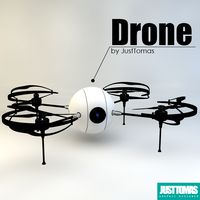
Drone
...drone camera drone electronics justtomas military parrot plane robot sci-fi spy toy vehicle
drone by justtomas .c4d r16 .obj .3ds
turbosquid
$6

Drone
...rone
turbosquid
royalty free 3d model drone for download as on turbosquid: 3d models for games, architecture, videos. (1347051)
turbosquid
free
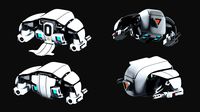
Drone
...drone
turbosquid
free 3d model drone for download as blend on turbosquid: 3d models for games, architecture, videos. (1688993)
turbosquid
$69
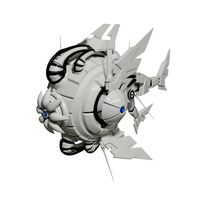
Drone
...e
turbosquid
royalty free 3d model drone for download as max on turbosquid: 3d models for games, architecture, videos. (1232508)

